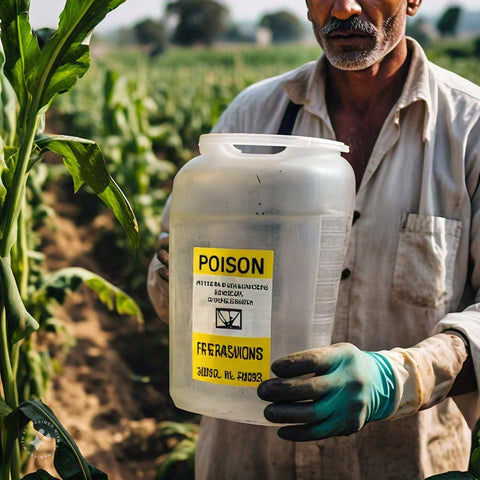In the need to protect these crops and reap bumper harvests, pesticides have become a staple of modern agriculture. These chemical compounds keep pests and diseases at bay, but their continuous application raises a number of health concerns related to cancer and inflammatory diseases. We are having a health crisis caused by the alarming and incessant use of pesticides. It is therefore very important for consumers to understand the role of pesticides on our health and find safer alternatives for farming, not harming biodiversity or food supply chain.
Understanding Pesticides and Their Uses
Pesticides are chemicals used to kill or control pests that may cause damage to a crop. They include herbicides, insecticides, fungicides, and rodenticides—all targeting specific organisms. While they are highly instrumental in maximizing food production and generally reducing losses, wide usage also often means that the residues end up in our food supply.
Pesticides and Carcinogenic Risk
Scientists keep studying how pesticides and cancer are linked. Some health groups, like the International Agency for Research on Cancer (IARC), which is part of the World Health Organization (WHO), have labeled certain pesticides as cancer-causing. For example, glyphosate, an extremely popular herbicide, was classified as probably carcinogenic in humans based on sufficient evidence linking it to non-Hodgkin lymphoma.
The Science Behind the Risk
The chemical properties of pesticides and the nature of their interaction with biological systems realize their carcinogenic potential. Most pesticides act by inducing changes in some basic cellular processes in pests, which finally affect human cells as well. Long-term exposure to certain pesticides has been related to genetic mutation, oxidative stress, and other mechanisms associated with the development of cancer.
Cases of cancers, such as leukemia, lymphoma, and prostate cancer, were found to be higher in agricultural workers who had been exposed more frequently to pesticides. In food intake, however, the risk for the general population is not very clear because the regulatory bodies set a maximum residue limit in order to reduce the exposure.
Regulatory Measures and Safety Standards
Organizations around the world, such as the United States Environmental Protection Agency (EPA) and the European Food Safety Authority (EFSA), regulate the application of pesticides through evaluation and regulation. Authorities evaluate the scientific information in determining ideally safe levels of residues to remain present in food. But the question of its efficacy has always been there as many believe that the testing done is not enough, or there could still be traces and there might be side effects in the longer run.
Moving Towards Safer Alternatives
Given the risks involved, there is a growing drive to reduce pesticide use and find alternatives for pest management. One such method could be integrated pest management, an approach in which biological, cultural, and mechanical measures against pests are combined with minimum chemical interference. In the same light, organic farming methods also offer pesticide-free alternatives by using natural methods and products for regulating the growth of pests.
Consumer choices can make a difference, too: purchasing organically grown fruits and veggies; washing them properly; and supporting local, sustainably managed farms reduce exposure to pesticides.
The Way Forward
While, undoubtedly, pesticides have revolutionized agriculture and food production, these potential carcinogenic properties underline that vigilance and further research are warranted. In our pursuit of productivity versus health and safety, there are choices to be made toward safer pest management practices and informed decisions that will help begin the process of a cleaner, healthier food chain. It's a tall order to rid our foods of these pesticides, but certainly achievable with more effort and ingenuity.




